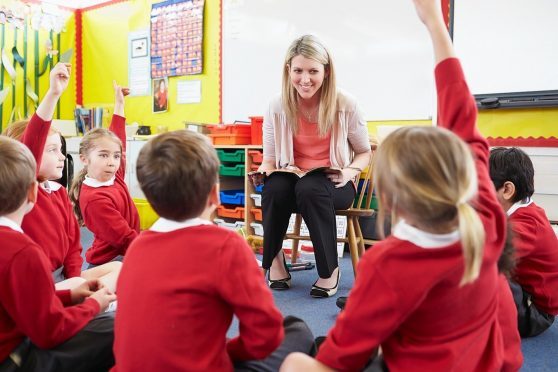A secondary school in Inverness has been named as the most desirable among parents in the Highlands, the Press and Journal can reveal.
The local authority is being flooded every year with requests from parents who want to send their children to Millburn Academy.
Figures released to the Press and Journal show that it has received more “placing requests” from parents for the Inverness school than any other in the entire region, in each of the last five years.
Meanwhile, in Moray, the 2014-15 figures show that Elgin Academy was the most requested school.
Parents have the right to submit a request if they want their child to attend a school which lies outwith their catchment area.
Both local authorities in Highland and Moray recorded a 25% rise in such applications since 2010.
There has been a total of 3,952 placing requests for primaries and secondaries in Highland throughout the region in the five-year period.
In 2010, there were 620 applications compared to the most recent of 782, with a peak in 2013-14 of 912.
In Moray, applications also jumped by more than 25%, from 522 to 645.
Highland Council’s education committee chairman Drew Millar said he was “surprised” to hear that Millburn was always above the other city schools in terms of requests.
He said: “I don’t know why Millburn is the highest because all of the high schools in Inverness are of good quality for teaching and learning.
“It’s obviously down to parental choice. Some parents do look at league tables and say ‘that’s a fantastic school and I must get my child in there’.
“To be honest, I think the results of all Inverness secondary schools have been very good.
“It’s how people perceive what’s important, and the likes of Inverness Royal Academy may start to attract people there with its new branding and facilities.
“I think we also need to look at why there is a 25% rise in placing requests.
“This is something I will be acting on and I have a meeting soon with the director of education and that will be something I’ll be putting to him and finding out if we do anything about it”.
Anyone who submits a request must do so in writing to the local authority that runs the school.
Councils must respond in writing and, if they turn down the requests, they must explain the reasons. In the event an application is turned down, parents have a right of appeal.
Inverness Central councillor Bet McAllister, whose ward covers both Millburn Academy and Inverness High School, said: “I think academic performance at Millburn has always been high.
“Parents are interested in good schools and they want their children to go to one. Millburn was built about three years ago and it has fantastic facilities as well. Maybe they should have made it that little bit bigger.
“The parent council at Inverness High School think that if you live in the area you should go to school in the area. In the past you went to school where you lived and there was no dotting about.
“I can see if a child has needs and there are more things there for them then it makes sense, and I have no problem with parents sending their children to schools in different catchment areas.”
In four of the five years more than a dozen refusals to requests were served within the Highland Council area, with a peak of 17 refusals in 2014-15.
Common reasons for refusal include that it would require the need for an additional class or the employment of an additional teacher at a future stage of the child’s education in primary school, even if pupil numbers stayed constant.
Other reasons include that acceptance would be likely to be detrimental to the continuity of the child’s education or to the educational wellbeing of other pupils and the order of discipline in the school.
The figures showed that other councils have experienced large rises, with the number of requests in Aberdeenshire more than trebling from 214 in 2010-11 to 673 in 2014-15.
In Aberdeen, the number of requests increased by about 20% from 2,070 to 2,524.
